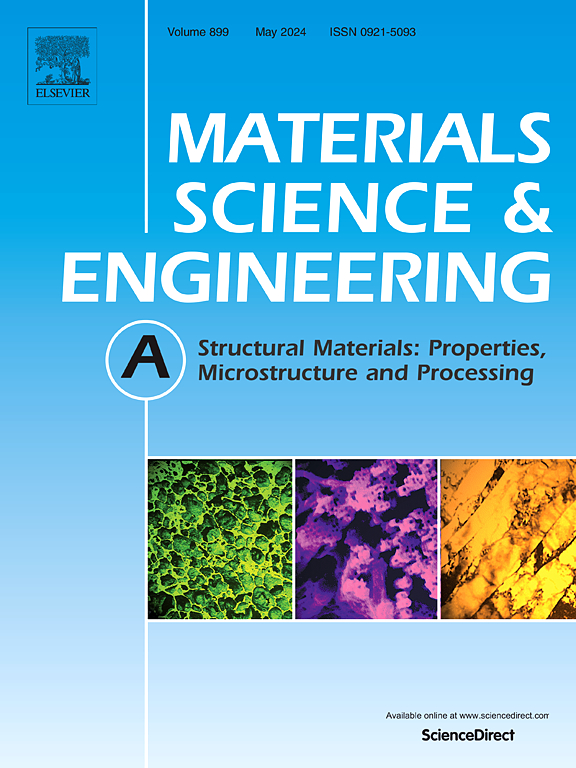Effect of rolling reduction on the texture evolution and mechanical properties hot-rolled WMoTaV refractory high entropy alloy with interfacial segregation
IF 6.1
2区 材料科学
Q1 MATERIALS SCIENCE, MULTIDISCIPLINARY
引用次数: 0
Abstract
The microstructural modification of refractory high entropy alloys (RHEAs) during rolling is a recognized technology for improving their mechanical properties, but limited researches are available for the internal coupling of macroscopic deformation and grain orientation evolution. In the present work, a single BCC WMoTaV RHEAs was hot-rolled to different reduction in thickness. The evolution process of their microstructure, texture and mechanical properties was fully tracked. A distinct BCC W-enriched nanolayer exists in hot-rolled WMoTaV RHEAs. This nanolayer effectively hinders the grain orientation of the alloy during hot deformation. Eventually, the angle differences between rolled grains c-axis and ⟨001⟩ basal texture is mainly concentrated in 0–70°, no texture component with 70°–90° appears. This is distinct from the ubiquitous rolling grain orientation. Moreover, the dominant strong basal ⟨001⟩//ND texture and ⟨111⟩//ND textures exist in rolling grains with 0–20° and 45°–70°, respectively. Under large rolling reduction, the strong basal texture alters to suppress deformation. At the same time, non-substrate dislocation slip is activated to adapt to larger plastic deformation to synergistically improve yield strength-plasticity.
The geometrically necessary dislocations (GND) density also increases and distributes uniformly to coordinate microscopic deformation and maintain strain continuity. Under the joint contribution of grain boundary, dislocation and texture, the rolling sample with 60 % reduction achieves an ultrahigh yield strength (1524 MPa) and plasticity (8.1 %) trade-off along the rolling direction compared to typical RHEA alloys. These findings hold promise for further optimizing alloy properties.
求助全文
约1分钟内获得全文
求助全文
来源期刊

Materials Science and Engineering: A
工程技术-材料科学:综合
CiteScore
11.50
自引率
15.60%
发文量
1811
审稿时长
31 days
期刊介绍:
Materials Science and Engineering A provides an international medium for the publication of theoretical and experimental studies related to the load-bearing capacity of materials as influenced by their basic properties, processing history, microstructure and operating environment. Appropriate submissions to Materials Science and Engineering A should include scientific and/or engineering factors which affect the microstructure - strength relationships of materials and report the changes to mechanical behavior.
 求助内容:
求助内容: 应助结果提醒方式:
应助结果提醒方式:


